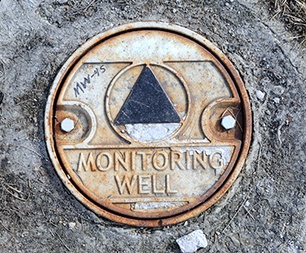Monitoring wells are useful for determining the physical, chemical, biological, and radiological properties of groundwater. When drilling the groundwater monitoring well, the engineer determines the diameter of the well. This decision influences well construction, use and maintenance.
Questions To Ask:
What is the purpose of the well?
Every monitoring well has a distinct purpose. An environmental engineer may use it to track the spread of contaminants. A government agency may use it to determine the movement of water through an Aquifer. A geologist or hydrologist may use it to determine the chemical profile of the water before and after pumping.
How far down will the well go? 
Smaller diameter wells work best at shallower depths. As the depth goes deeper, the thickness of the well wall needs to increase to provide structural support. That means the diameter of the borehole and the casing needs to increase.
Is the groundwater monitoring well going to have a pump installed for water/contaminant recovery?
Some monitoring wells also serve as a portal for water and/or contaminant recovery. If the plan is to use the well for recovery, the diameter of the well will need to expand to accommodate the pump components. This includes an increase in surface casing as well as subsurface pipe.
What is the radius of influence in the aquifer?
A well's radius of influence is the furthest distance from the aquifer where the pressure remains consistent with the pressure at the pipe. A steady pressure means the amount of water flowing to the well will be consistent. The wider the diameter of the well, the higher the radius of influence will be.
Other Factors to Consider
These questions, along with others, help engineers determine the well diameter needed for a particular project. There are other factors to consider in sizing the well.
Smaller wells have lower construction costs. They also generate less waste for disposal. These wells can recover from purging faster and produce less purge water for disposal. They are easy to dig with direct push, jetting, or hollow stem augers. The narrower diameter does make installing casing, packs, and seals more difficult.
Larger wells have higher construction costs and more waste disposal. They offer easier sampling and can go to greater depths than a narrower well. It does have a slower recovery rate after purging, but it offers plenty of water for analysis.
If you need a groundwater monitoring well installed, call the experts at Talon/LPE Drilling Services. We are an environmental drilling service company serving Texas, Oklahoma, and New Mexico.

